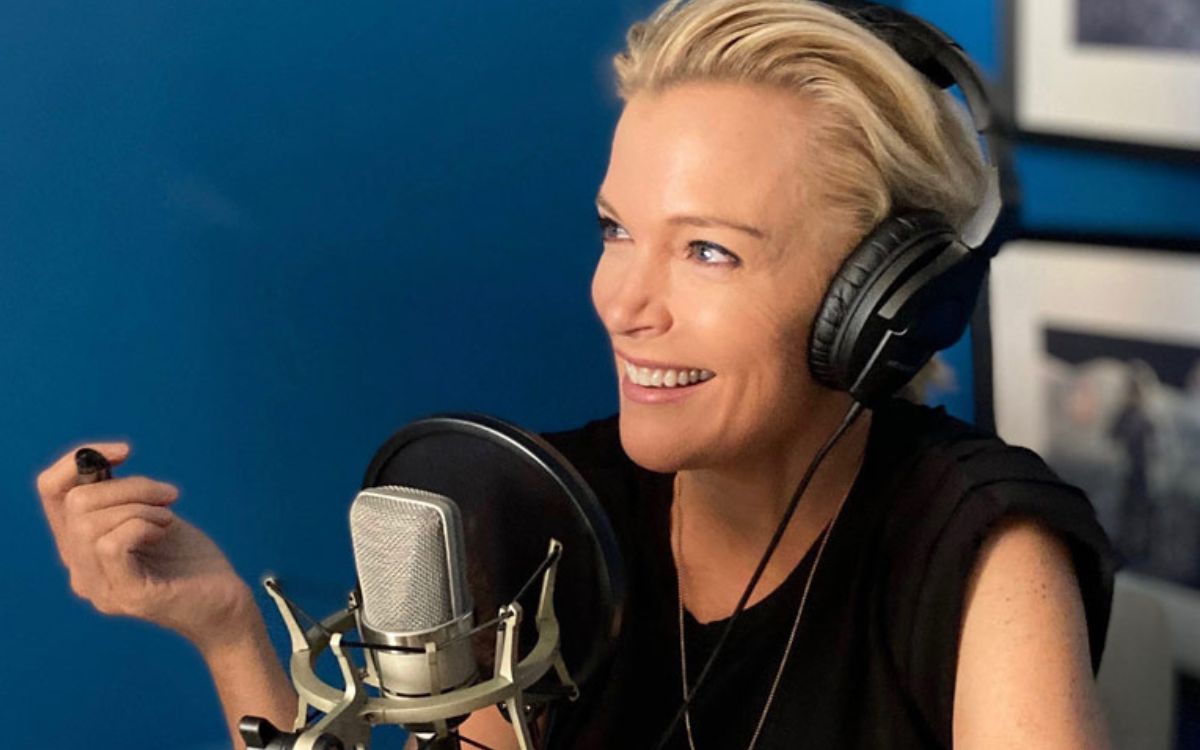Home>Events & Info>Podcast>How To Get Ads On Your Podcast


Podcast
How To Get Ads On Your Podcast
Modified: January 22, 2024
Learn how to monetize your podcast with ads and start making money from your content. Discover effective strategies and tips for attracting advertisers to your podcast.
(Many of the links in this article redirect to a specific reviewed product. Your purchase of these products through affiliate links helps to generate commission for AudioLover.com, at no extra cost. Learn more)
Table of Contents
- Introduction
- Understanding the Basics of Advertising on Podcasts
- Preparing Your Podcast for Advertising
- Finding and Approaching Potential Advertisers
- Negotiating Ad Deals and Rates
- Creating Advertisements for Your Podcast
- Integrating Ads into Your Podcast Episodes
- Tracking and Measuring Ad Performance
- Managing and Optimizing Ad Campaigns
- Dealing with Challenges and Obstacles in Podcast Advertising
- Conclusion
Introduction
Welcome to the world of podcasting, a dynamic and rapidly growing medium that offers unique opportunities for content creators to engage with their audience. If you have been producing podcasts for some time, you may be considering monetizing your hard work by incorporating advertisements into your episodes. Not only can this help generate revenue, but it can also provide valuable exposure for brands and products that align with the interests of your listeners.
Advertising on podcasts has become an increasingly popular way for businesses to connect with their target market. With the ability to reach a highly engaged and niche audience, podcast advertising has proven to be effective in driving brand awareness and influencing purchasing decisions.
In this comprehensive guide, we will walk you through the process of getting ads on your podcast, from understanding the basics to managing and optimizing your ad campaigns. Whether you’re a seasoned podcaster looking to monetize your show or just starting out and curious about the potential revenue streams podcast advertising offers, this guide has got you covered.
We’ll delve into the key aspects of podcast advertising, including how to prepare your podcast for ads, finding and approaching potential advertisers, negotiating ad deals and rates, creating effective advertisements, integrating ads into your episodes, tracking and measuring ad performance, managing ad campaigns, and overcoming challenges that may arise along the way.
By the end of this guide, you’ll have a solid understanding of the podcast advertising landscape and the strategies to effectively leverage it to monetize your podcast. So, let’s dive in!
Understanding the Basics of Advertising on Podcasts
Before diving into the world of podcast advertising, it’s important to have a solid understanding of the basics. Podcast advertising typically involves partnering with brands or businesses that want to promote their products or services to your listeners. These advertisements can come in various forms, including pre-recorded audio ads, host-read endorsements, and even integrated sponsorships.
One of the key advantages of podcast advertising is the ability to connect with a highly targeted audience. Unlike traditional forms of advertising, where reaching a specific demographic can be challenging, podcasts allow advertisers to reach a niche audience that is actively engaged in the content they consume. This targeted approach ensures that the ads resonate with your listeners, resulting in higher conversion rates for advertisers.
There are two common models of podcast advertising:
- CPM (Cost per Mille): This model involves advertisers paying a specific amount for every thousand downloads or impressions an episode receives. The CPM rate can vary depending on factors such as the size of your audience, niche, and engagement levels. Advertisers typically provide an ad script or pre-recorded ad, which you then integrate into your episode.
- Sponsorships: This model involves entering into a partnership with a brand for a specific number of episodes or a specific time frame. In this case, the advertiser typically pays a flat fee for this sponsorship arrangement. The sponsorship can involve host-read ads or even sponsorship messages at the beginning or end of the episode.
When considering podcast advertising, it’s essential to strike a balance between monetization and maintaining the integrity of your content. Your listeners tune in because they value your insights and authenticity, so it’s crucial to align with advertisers that align with your brand and share similar values. Your audience’s trust is paramount, so ensure that you choose advertisers with products or services that genuinely benefit your listeners.
In order to attract advertisers, it’s important to have a well-established podcast with a loyal and engaged audience. Advertisers are often interested in metrics such as the number of downloads per episode, listener demographics, engagement levels, and the overall reach of your podcast. It may take some time to build up these numbers, but by consistently producing quality content and marketing your podcast effectively, you can attract advertisers willing to invest in your show.
Now that you have some foundational knowledge of podcast advertising, it’s time to delve into the process of preparing your podcast and finding potential advertisers. So let’s move on to the next section!
Preparing Your Podcast for Advertising
Before you start reaching out to potential advertisers, it’s important to ensure that your podcast is ready to accommodate ads. Here are some essential steps to prepare your podcast for advertising:
- Establish a Strong Brand: Define your podcast’s niche and develop a strong brand identity. This includes creating a memorable podcast name, designing eye-catching cover art, and developing a consistent tone and style for your episodes. Advertisers are more likely to partner with podcasts that have a well-defined brand that aligns with their target audience.
- Grow Your Audience: Focus on growing your podcast’s audience before seeking out advertisers. The larger your listener base, the more attractive your podcast becomes to potential advertisers. Employ marketing strategies such as social media promotion, guest appearances on other podcasts, and collaborations to increase your reach. Engagement with your audience through listener comments, reviews, and feedback can also help attract advertisers.
- Create a Media Kit: A media kit is a document that showcases key information about your podcast to potential advertisers. Include demographic data about your audience, download numbers, listener testimonials, and any awards or recognition your podcast has received. Highlight your podcast’s unique selling points and explain why your audience is a valuable target market for advertisers.
- Invest in Production Quality: Advertisers want to ensure that their brand is represented in the best light, so it’s crucial to deliver high-quality production. Invest in good audio equipment, editing software, and sound engineering to provide a professional listening experience. Make sure your podcast episodes are well-structured, engaging, and free from any technical issues.
- Explore Hosting Platforms: Research podcast hosting platforms that offer built-in advertising solutions or easy integration with ad networks. These platforms can help streamline the process of inserting ads into your episodes and provide valuable insights about ad performance. Additionally, some hosting platforms offer ad marketplaces where you can connect directly with advertisers.
- Ensure Legal Compliance: Familiarize yourself with any legal requirements related to podcast advertising in your jurisdiction. This may include disclosure guidelines or specific regulations that advertisers and hosts must follow. Adhering to legal obligations helps maintain trust with your listeners and avoids potential issues down the line.
By taking the time to prepare your podcast for advertising, you are not only making your show more appealing to potential advertisers, but you are also enhancing the overall listener experience. Remember, the goal is to strike a balance between monetization and delivering valuable content to your audience. With a well-prepared podcast, you’re ready to move on to the next step: finding and approaching potential advertisers.
Finding and Approaching Potential Advertisers
Once you have prepared your podcast for advertising, it’s time to find and approach potential advertisers. The key is to identify brands or businesses that align with your podcast’s niche and target audience. Here are some effective strategies to help you connect with potential advertisers:
- Research Relevant Brands: Start by researching brands that align with your podcast’s content and target audience. Look for companies that have a natural connection to the topics discussed on your show. Consider the products or services that your listeners would find useful or interesting.
- Utilize Ad Networks: Ad networks act as intermediaries between podcasters and advertisers. They connect you with a wide range of potential advertisers, making it easier to find relevant brands. Consider joining ad networks such as Midroll, AdvertiseCast, or Anchor Sponsorships to expand your opportunities for advertising partnerships.
- Reach Out to Relevant Blogs and Websites: Identify influential blogs or websites that target a similar audience as your podcast. Reach out to them and propose collaboration opportunities, such as cross-promoting each other’s content or offering sponsored segments on your show. This can help attract advertisers who are already interested in reaching your podcast’s audience.
- Attend Industry Events: Industry conferences and events related to your podcast’s niche can be great opportunities to connect with potential advertisers. Network with representatives from relevant brands, share information about your podcast, and express your interest in exploring advertising partnerships. Building personal connections can greatly increase your chances of securing advertising deals.
- Utilize Social Media: Leverage social media platforms to your advantage. Follow brands that align with your podcast, engage with their content, and establish a rapport. Direct message these brands and express your interest in potential advertising partnerships. Additionally, use relevant hashtags and participate in industry conversations to raise awareness about your podcast within the advertising community.
- Create a Pitch: Develop a compelling pitch that highlights your podcast’s value and audience engagement. Tailor your pitch to each potential advertiser, showcasing how their brand can benefit from reaching your specific audience. Include statistics, listener testimonials, and examples of successful past collaborations, if applicable.
When approaching potential advertisers, it’s important to be professional and enthusiastic. Clearly communicate the benefits and value your podcast offers, and convey your genuine interest in working with the brand. Remember, advertisers are looking for podcasters who can effectively represent their brand and engage their target audience.
Lastly, be prepared for rejection. Not every brand will be a perfect fit, and that’s okay. Stay persistent, continue to create high-quality content, and keep reaching out to potential advertisers who align with your podcast’s niche. With consistent effort, you will increase your chances of securing advertising deals and monetizing your podcast.
Now that you know how to find and approach potential advertisers, it’s time to learn about negotiating ad deals and rates, which we’ll cover in the next section.
Negotiating Ad Deals and Rates
Once you’ve established contact with potential advertisers, the next step is to negotiate ad deals and rates that are mutually beneficial. Here are some tips to help you navigate the negotiation process:
- Know Your Worth: Before entering into negotiations, have a clear understanding of the value your podcast brings to advertisers. Consider factors such as your audience size, engagement levels, demographic information, and the niche you cater to. This information will help you confidently negotiate rates based on the unique value you provide.
- Consider Different Pricing Models: Depending on the ad formats you offer, you can explore different pricing models. This can include CPM (Cost per Mille), where you charge a set rate based on the number of downloads or impressions an episode receives, or a flat fee for a sponsorship across multiple episodes. Evaluate the pros and cons of each model and choose one that aligns with the goals of your podcast and the needs of the advertiser.
- Research Industry Standards: Familiarize yourself with industry standards and average rates for podcast advertising. This will give you a starting point for your negotiations and help you create a fair pricing structure. Consider factors such as the length of the ad, the positioning within the episode, and the level of audience engagement when determining your rates.
- Highlight Your Unique Selling Points: Emphasize the unique aspects of your podcast during negotiations. This could include factors such as your niche audience, the quality of your content, the level of influence you have within your industry, or any special features you offer to advertisers, such as social media promotion or customized ad integrations.
- Consider Long-Term Relationships: When negotiating ad deals, think beyond a single campaign. Building long-term relationships with advertisers can provide stable revenue streams and ongoing partnerships. Discuss the potential for extended sponsorships, season-long commitments, or mutually beneficial collaborations that can benefit both parties in the long run.
- Be Flexible: Keep in mind that negotiation is a two-way street. Be open to compromises and alternative solutions that align with the goals and budgets of the advertisers you’re working with. Flexibility can help foster positive relationships and lead to successful and mutually beneficial advertising campaigns.
Remember, negotiations are a normal part of the advertising process, and don’t be discouraged by rejection or counteroffers. Keep refining your pitch, emphasizing your unique value proposition, and demonstrating your commitment to delivering results for advertisers.
Once you have agreed upon the terms and rates with an advertiser, ensure that you have a written agreement or contract outlining the details of your partnership. This document should include information such as the duration of the ad campaign, specific deliverables, payment terms, and any exclusivity agreements.
With the negotiation process complete, you can move forward with creating advertisements that effectively promote the advertiser’s product or service. We’ll explore this topic in detail in the next section.
Creating Advertisements for Your Podcast
Creating effective advertisements for your podcast is crucial for engaging your audience and delivering value to your advertisers. Here are some key steps to consider when crafting compelling podcast ads:
- Understand Your Advertiser’s Goals: Start by understanding the goals and messaging of the advertiser. What are they trying to promote? What key points or features do they want to emphasize? Ensuring that you have a clear understanding of their objectives will allow you to create an ad that aligns with their brand and resonates with your audience.
- Script Writing: Craft a script that captures the essence of the advertisement while maintaining the authenticity of your podcast. Keep the ad concise, engaging, and avoid overly salesy language. Consider injecting your own personality and relating the advertisement to your own experiences or thoughts to make it more relatable to your listeners.
- Host-Read vs. Pre-Recorded Ads: Decide whether you will be delivering the ad as a host-read endorsement or using pre-recorded advertisements provided by the advertiser. Host-read ads tend to be more effective and personal, as they allow you to weave the advertisement seamlessly into your episode. However, pre-recorded ads may be necessary for certain advertisers or if you prefer a more polished delivery.
- Ad Placement and Frequency: Strategically consider where to place the ads within your podcast for maximum impact. Some podcasters opt for pre-roll ads at the beginning of the episode, while others prefer mid-roll or post-roll placements. Experiment with different options to find what works best for your podcast and audience. Additionally, determine the frequency of the ads to maintain a balance between providing value to your listeners and fulfilling your agreement with the advertiser.
- Integrate Ads Naturally: Ensure that the advertisement flows smoothly with your regular content. Avoid abrupt transitions or disruptions to the listener experience. Find creative ways to integrate the ad into your episode, such as using a storytelling approach or incorporating it into a discussion or anecdote related to the advertiser’s product or service.
- Test and Optimize: Monitor the performance of your advertisements and continually iterate and improve upon them. Use data from your podcast analytics, including listener retention, feedback, and response from your audience, to gauge the effectiveness of the ads. Make adjustments as necessary to optimize your ad content and delivery.
Remember, the key to successful podcast advertisements is finding the right balance between delivering value to your listeners and providing exposure and results for your advertisers. By creating engaging and authentic ads that seamlessly integrate into your episodes, you can create a positive experience for your audience while achieving your advertising goals.
Now that you have a solid understanding of creating podcast advertisements, the next step is to learn how to integrate ads into your podcast episodes effectively. We’ll explore this topic in detail in the next section.
Integrating Ads into Your Podcast Episodes
Integrating ads into your podcast episodes in a seamless and effective manner is crucial to maintaining the engagement of your listeners and maximizing the impact of the advertisements. Here are some tips to help you effectively integrate ads into your podcast episodes:
- Choose the Right Placement: Consider the placement of your ads within the episode. Some podcasters opt for pre-roll ads at the beginning, mid-roll ads during a natural break in the content, or post-roll ads at the end of the episode. Experiment with different placements to find what works best for your podcast and audience.
- Provide Value and Relevance: Ensure that the ads you choose to include align with the interests and needs of your audience. Choose advertisers and products that are relevant to your podcast’s niche and provide value to your listeners. This will help maintain the trust of your audience and increase the likelihood of engagement with the ads.
- Segway Smoothly: When transitioning into an ad segment, use a smooth and natural segue to avoid a jarring interruption in the flow of your episode. Try to find a connection or tie-in between the content you were discussing and the product or service being advertised, making the transition feel organic and seamless.
- Personalize the Delivery: If you opt for host-read ads, use your own voice and personality to deliver the ad. Make it sound natural and conversational, as if you’re recommending the product or service to a friend. Inject your own experiences or anecdotes to make the ad more relatable and engaging for your listeners.
- Be Transparent: Transparency is key when incorporating ads into your episodes. Clearly identify that you are transitioning into an advertisement or sponsorship segment to avoid any confusion with your regular content. It’s important to maintain the trust of your audience by being upfront about the promotional nature of the ads.
- Monitor Ad Length: Consider the length of your ads to maintain a balance between delivering value to your listeners and fulfilling your agreement with the advertiser. Avoid excessively long ads that may lead to listener disengagement. Instead, aim for concise and impactful ads that deliver the key messages effectively.
- Experiment and Iterate: Don’t be afraid to experiment with different approaches to ad integration and gather feedback from your audience. Monitor listener response, engagement levels, and any feedback or comments received regarding the ads. Use this information to iterate and improve your ad integration strategy over time.
Remember, successful ad integration is all about maintaining the interest and trust of your audience while effectively promoting the products or services of your advertisers. By carefully considering the placement, value, and delivery of your ads, you can create a positive listening experience for your audience and generate valuable results for your advertisers.
Now that you know how to effectively integrate ads into your podcast episodes, the next step is to learn how to track and measure ad performance. We’ll explore this topic in detail in the next section.
Tracking and Measuring Ad Performance
Tracking and measuring the performance of your podcast ads is essential for understanding the effectiveness of your campaigns and providing valuable insights to your advertisers. Here are some strategies to help you track and measure your ad performance:
- URLs and Promo Codes: Provide unique URLs or promo codes in your ads that listeners can use to make purchases or visit specific landing pages. This allows you to track the number of conversions or visits generated directly from your podcast. Collaborate with your advertisers to set up these URLs or codes and establish a process for tracking and reporting.
- Podcast Analytics: Utilize the analytics provided by your podcast hosting platform to gain insights into the performance of your episodes and the engagement levels of your audience. Look for data such as download numbers, listener retention rates, and listener geographic information to gauge the reach and impact of your ads.
- Surveys and Listener Feedback: Encourage your listeners to provide feedback and insights about the advertisements on your podcast. Conduct surveys or solicit listener responses through social media or email to gather qualitative data about their perception of the ads. This feedback can help you understand the effectiveness and audience reception of the ads.
- A/B Testing: Try testing different versions of ads to compare their performance. Create multiple variations of the same ad or test different messaging approaches to determine which resonates best with your audience. Track the response rates and listener engagement levels for each version to identify the most effective ad content and delivery.
- Engagement Metrics: Track social media engagement, such as likes, comments, and shares, related to your podcast episodes and the advertisements within them. This can provide insights into the level of interest and interaction your ads generate among your audience. Monitor online discussions and listen to audience conversations to gather qualitative feedback on the impact of your ads.
- ROI and Conversion Tracking: Work closely with your advertisers to track the return on investment (ROI) and conversion rates resulting from your podcast ads. Discuss methods for tracking conversions, such as implementing affiliate or tracking links, and establish a system for reporting these numbers accurately.
- Regular Reporting to Advertisers: Maintain open communication with your advertisers and provide regular reports detailing the performance of their ad campaigns. Include the relevant metrics and data you have gathered, the audience response and engagement metrics, and any qualitative feedback you have received. This demonstrates your commitment to transparency and allows advertisers to assess the success of their investment.
By diligently tracking and measuring the performance of your podcast ads, you can gain valuable insights into the effectiveness of your campaigns and refine your strategies accordingly. This data will not only help you optimize future ad placements but also strengthen your relationships with current and potential advertisers.
The next section will cover how to manage and optimize your ad campaigns effectively to ensure sustained success in podcast advertising.
Managing and Optimizing Ad Campaigns
Managing and optimizing your ad campaigns is essential to maximize the effectiveness of your podcast advertisements and achieve ongoing success. Here are some key strategies to help you efficiently manage and optimize your ad campaigns:
- Establish Clear Guidelines: Set clear guidelines for the types of advertisements you accept and the content standards you expect from advertisers. This ensures that the ads align with your podcast’s values and resonate with your audience. Develop an advertising policy or agreement that outlines these guidelines and share it with potential advertisers.
- Maintain Regular Communication: Foster open and ongoing communication with your advertisers throughout the campaign. Regularly check in with them to discuss ad performance, gather feedback, and address any concerns or questions they may have. This helps build strong relationships and ensures all parties are aligned and working towards the common goal of a successful campaign.
- Monitor and Optimize Ad Content: Continuously monitor the performance of your ad campaigns to identify areas for improvement. Pay attention to metrics such as engagement rates, conversion rates, and audience feedback to gauge the effectiveness of the ads. Use this data to make informed decisions about optimizing ad content, delivery, and placement for better results.
- Rotate Ads and Refresh Content: To prevent listener fatigue and maintain engagement, consider rotating ads and refreshing ad content regularly. This prevents repetitive exposure to the same ads and keeps your content fresh and interesting. Work with advertisers to develop variations of their ads or alternate between different advertisers in the same industry.
- Utilize Dynamic Ad Insertion: Explore the use of dynamic ad insertion technology. This allows you to serve ads dynamically based on listener demographics, location, or other targeted parameters. Dynamic ad insertion ensures that your ads are highly relevant to each listener, increasing the likelihood of engagement and conversion.
- Test New Ad Formats: Stay up to date with emerging ad formats and experiment with new approaches. Consider incorporating native ads, branded segments, or sponsored episodes to diversify your ad offerings. Testing new ad formats allows you to explore different ways to engage your audience and attract advertisers.
- Analyze Ad Performance Over Time: Regularly analyze the performance of your ad campaigns over an extended period. Look for trends, patterns, and areas of improvement. Analyze data across multiple campaigns and episodes to uncover insights about your audience’s preferences and responses to different types of ads.
- Continuously Grow and Engage Your Audience: Focus on growing and engaging your podcast audience. A larger and more engaged audience increases the value proposition for potential advertisers and opens doors to new advertising opportunities. Utilize marketing strategies, social media, collaborations, and other promotional activities to expand your reach and maintain a strong audience base.
Remember that managing and optimizing ad campaigns is an ongoing process. Regularly reassess your strategies, adapt to industry trends, and stay connected with your audience and advertisers to ensure that your podcast remains a valuable platform for advertising.
By actively managing and optimizing your ad campaigns, you can maximize the impact of your advertisements and create long-lasting relationships with your advertisers.
In the next section, we will discuss some common challenges and obstacles that you may encounter while implementing podcast advertising and how to overcome them.
Dealing with Challenges and Obstacles in Podcast Advertising
While podcast advertising presents opportunities for monetization, it also comes with its fair share of challenges and obstacles. Here are some common challenges you may encounter in podcast advertising and strategies for overcoming them:
- Attracting Advertisers: One of the initial challenges is finding and attracting advertisers, especially when you are starting or have a relatively small audience. To overcome this, focus on creating compelling content, growing your audience, and establishing your unique value proposition. Leverage social media platforms, attend industry events, and actively reach out to brands and ad networks to showcase the potential of your podcast.
- Ad Relevancy: Ensuring that the advertisements you incorporate are relevant to your audience and align with your podcast’s content can be a challenge. Conduct thorough research on potential advertisers to make sure their products or services resonate with your listener base. Craft ad scripts that integrate seamlessly with your content and prioritize the interests and needs of your audience. This enhances the relevance and effectiveness of the ads.
- Listener Response: Some listeners may have mixed feelings about advertisements interrupting their listening experience. To address this, clearly communicate the value of the ads to your audience and maintain transparency about the need for advertising to support your podcast. Strive to create engaging and entertaining ads that blend seamlessly with your content. Monitor and address any listener concerns or feedback promptly to maintain a positive relationship with your audience.
- Measuring Ad Performance: Accurately tracking and measuring the performance of your ads can be challenging without the proper tools and resources. Utilize unique URLs, promo codes, and tracking links provided by your advertisers to gather data on conversions and engagement. Leverage podcast analytics from your hosting platform to understand listener demographics, download rates, and engagement levels for each episode. Regularly communicate with advertisers to exchange insights and data to assess the success of the campaigns.
- Ad Fatigue: Regularly airing the same ads may lead to listener fatigue and decreased engagement. Combat ad fatigue by rotating ads, refreshing content, and introducing new formats. Encourage advertisers to provide variations of their ads or sponsor different segments of your show. This approach keeps your ads fresh and engaging for your audience, minimizing the risk of ad fatigue.
- Competitive Market: The podcasting landscape is highly competitive, with numerous podcasts vying for advertising opportunities. To stand out in this crowded market, focus on creating high-quality, niche content, engaging with your audience, and refining your unique selling points. Build strong relationships with advertisers, consistently deliver results, and leverage your audience’s loyalty and engagement to differentiate yourself from competitors.
- Managing Expectations: Setting realistic expectations for both yourself and your advertisers is important. Understand that advertising revenue may take time to build up and that achieving high-paying ad deals may require a substantial audience base. Clearly communicate your podcast’s metrics, growth strategies, and the potential benefits of advertising with you to manage advertisers’ expectations. Regularly assess and adjust your strategies to continually improve and deliver value to your advertisers and audience.
It’s important to remember that challenges in podcast advertising are part of the process. By staying resilient, adapting to the evolving landscape, and maintaining a strong focus on your audience and content, you can overcome these obstacles and succeed in monetizing your podcast.
In the final section, we’ll wrap up this guide to podcast advertising and summarize the key takeaways.
Conclusion
Congratulations on reaching the end of this comprehensive guide to podcast advertising! You now have a solid understanding of the fundamentals and strategies involved in getting ads on your podcast. Let’s recap the key takeaways:
Podcast advertising offers a unique opportunity to monetize your podcast while providing value to your audience and exposure for brands. Understanding the basics of podcast advertising, such as the different pricing models and the importance of targeting a niche audience, is crucial to success.
Preparing your podcast for advertising involves establishing a strong brand, growing your audience, and creating a media kit that showcases your podcast’s value to potential advertisers. By investing in production quality and exploring podcast hosting platforms, you can streamline the process of inserting ads into your episodes.
When it comes to finding and approaching potential advertisers, research relevant brands, utilize ad networks, and leverage social media and industry events. Crafting a compelling pitch and building personal connections are key strategies to secure advertising partnerships.
Creating effective advertisements involves understanding your advertiser’s goals, writing engaging scripts, and choosing the right delivery method, whether it’s host-read or pre-recorded ads. Integrating ads seamlessly into your podcast episodes and monitoring their performance through metrics, listener feedback, and surveys are crucial for optimizing ad campaigns.
Managing and optimizing your ad campaigns requires clear communication with advertisers, monitoring ad content and placement, and analyzing performance data. Overcoming challenges, such as attracting advertisers, maintaining ad relevancy, and measuring ad performance, can be achieved through research, audience engagement, and proper tracking techniques.
While there may be challenges and obstacles along the way, a proactive approach, adaptability, and a strong focus on providing value to your audience and advertisers will help pave the path to success in podcast advertising.
Remember, podcast advertising is an ever-evolving landscape, so continuously refine your strategies, stay connected with your audience, and adapt to industry trends to ensure sustained growth and monetization of your podcast.
Now it’s time to put your newfound knowledge into action. Good luck with your podcast advertising journey!











